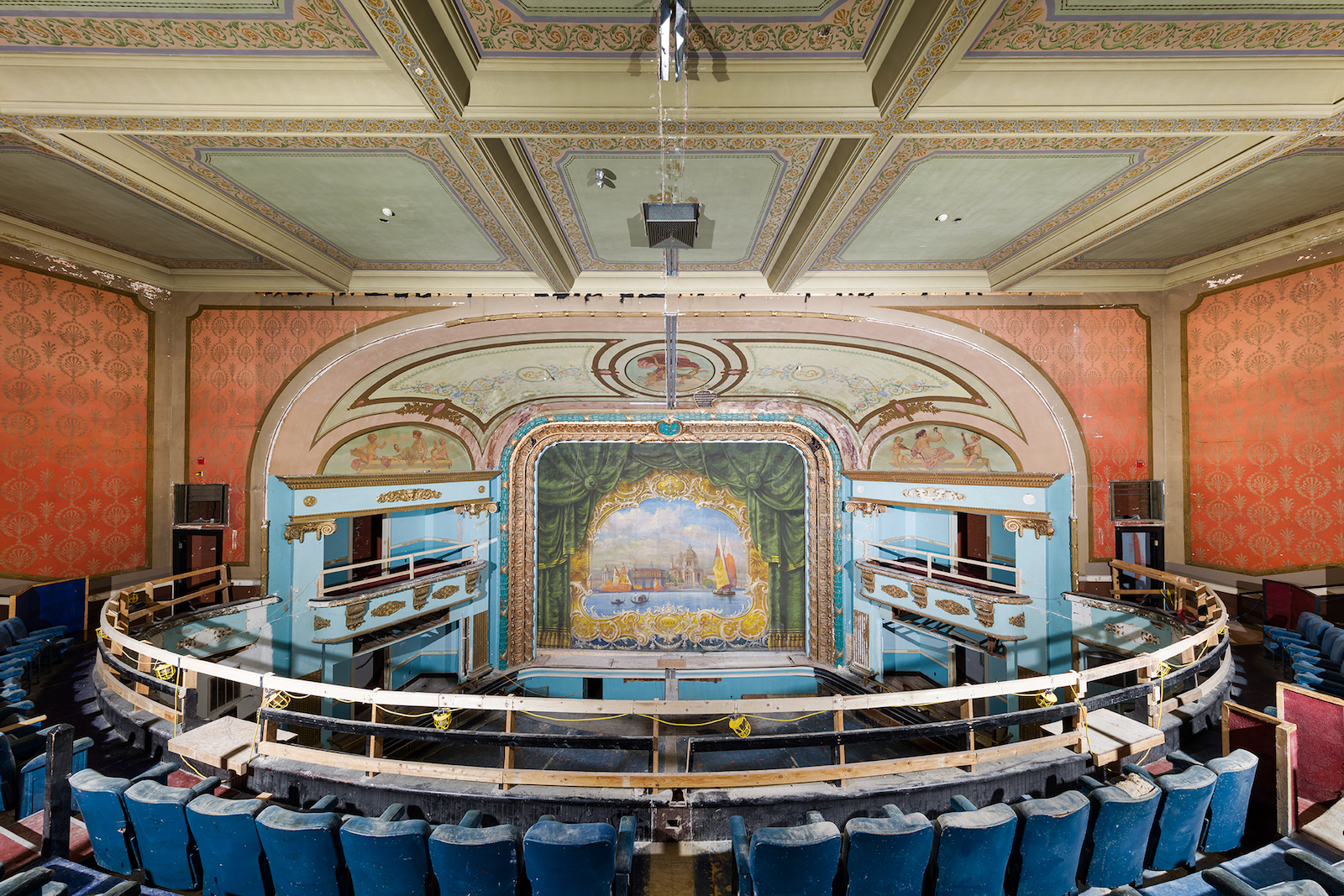- Photographer Matt Lambros has been documenting abandoned theaters across the US for over 10 years.
- He’s photographed 175 movie theaters so far, and his work has taken him all across the country.
- He was inspired by how his generation watched movies in multiplexes, with no idea that people used to go to opulent palaces filled with chandeliers, tapestries, and gold accents.
- Visit Insider’s homepage for more stories.
Netflix and chill has become part of the common lexicon. People watch million-dollar shows on their smartphones. Streaming services vie for our attention. No one leaves the house.
It wasn’t always like this.
There once was a time in which movie theaters reigned supreme. A time when going to the cinema was a treat. A time when movie theaters were called movie palaces, and seated thousands.
Photographer Matt Lambros has traveled the country documenting these crumbling palaces, serving up a stark reminder of how special watching movies used to be.
Keep scrolling to see the haunting images of crumbling theaters across the US.
Lambros has been working as a photographer for 12 years, but taking pictures for 20, getting his start documenting abandoned state hospitals around the east coast.

Initially he was filming them with the intent of becoming a film director, but after taking a black and white photography class in college he switched to photography.
The hospitals he was photographing were "almost their own town," according to Lambros, with farms, housing for staff, and even entertainment opportunities.

He said finding the abandoned theaters in those hospitals was always his favorite part, but seeing a beautiful mural at one in Boston really kicked off his series.
Photographing the opulent Kings Theatre in Brooklyn — which opened in 1929, shuttered in 1977, and recently reopened after a $95 million renovation — got him hooked on theaters.

"The Kings Theatre will always be my favorite," he said.
He's been photographing abandoned theaters almost exclusively for a decade now, and has captured 175 of them so far.

While he hasn't been keeping track, he thinks that besides Hawaii, Alaska, and "a few states in the west," his project has taken him almost everywhere in the country, as well as the UK.
While 175 may seem like a lot of abandoned theaters, it's not, really.

"Every single town had at least one theater," he said. "If it had a downtown, it had a theater." He estimates that small towns could even have had four or five theaters, and bigger towns over 100.
Going to the movies is "a form of entertainment we don't see as much anymore," Lambros said.

He explained that many of these grand movie palaces had already reinvented themselves from vaudeville and silent film theaters into movie theaters.
Lambros, who is 36, said he was inspired by the fact that his generation grew up going to multiplexes, having no clue that people used to watch movies in veritable palaces.

With giant chandeliers, gold accents, and ornate art and tapestries, these theaters were jaw-droppingly beautiful.
"We just consume films in a different way now. Even multiplexes today are having problems," he said.

"Everyone's just screening their movies at home these days," he said.
"Movies used to be an event, you'd get dressed up, theaters had an orchestra," he explained, conceding that some theaters, like the Alamo Drafthouse, are trying to bring back that sort of showmanship.

Interestingly, according to Lambros one of the main reasons these beautiful theaters were left to rot in the first place was the cost of heating them. He explained that these enormous theaters often had between 1,500 and 3,000 seats, and were incredibly difficult to keep warm - especially if those seats weren't being filled by paying customers.
"It's really tough unless you have a lot of money to get them up and running again," he said of the abandoned palaces, adding that some were turned into warehouses, churches, or performing arts centers.

"But how many performing arts centers do you need in a city?" he asked.
While he admitted that there was "a little bit of trespassing" at first, he now has people reaching out to him about photographing theaters.

He's also heavily insured now. "You'd be surprised by how many doors that opens," he said.
Places like the Theatre Historical Society of America, which he is now on the board on, were instrumental in helping him find abandoned theaters.

He prefers working with organizations that are trying to get the opulent spaces restored. For example, he was able to document the Kings Theatre in Brooklyn all the way from shuttered and decrepit to its re-opening after a $95 million-dollar renovation.
"It always amazes me what you can find, what's left behind," he said.

He's always surprised to find vintage movie posters from, say, the '50s in a theater that shuttered in the '80s.
He also says he almost always finds porn magazines in the projection room.
"Someone at some point thought it wasn't worth it, and closed the door and walked away," he said.

Many abandoned places look like they were simply closed overnight.
"Going in and finding a palace full of cobwebs is astounding to me. I feel like if I owned one of these buildings, I would fight to keep it open. I'm sure some of them did, but I would have fought very hard to prevent them from being demolished," said Lambros.

Lambros has his third book on abandoned theaters coming out on November 5, called "After the Final Curtain: America's Abandoned Theaters."
You can see more of his work on his website, or follow him on Instagram.

